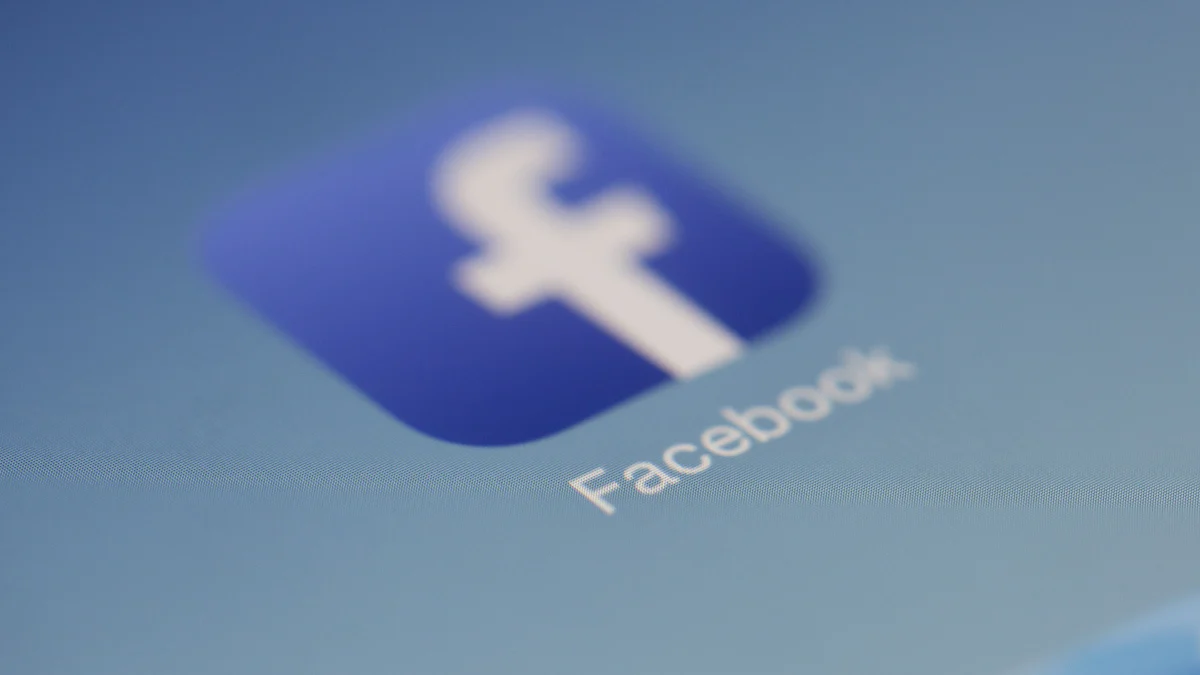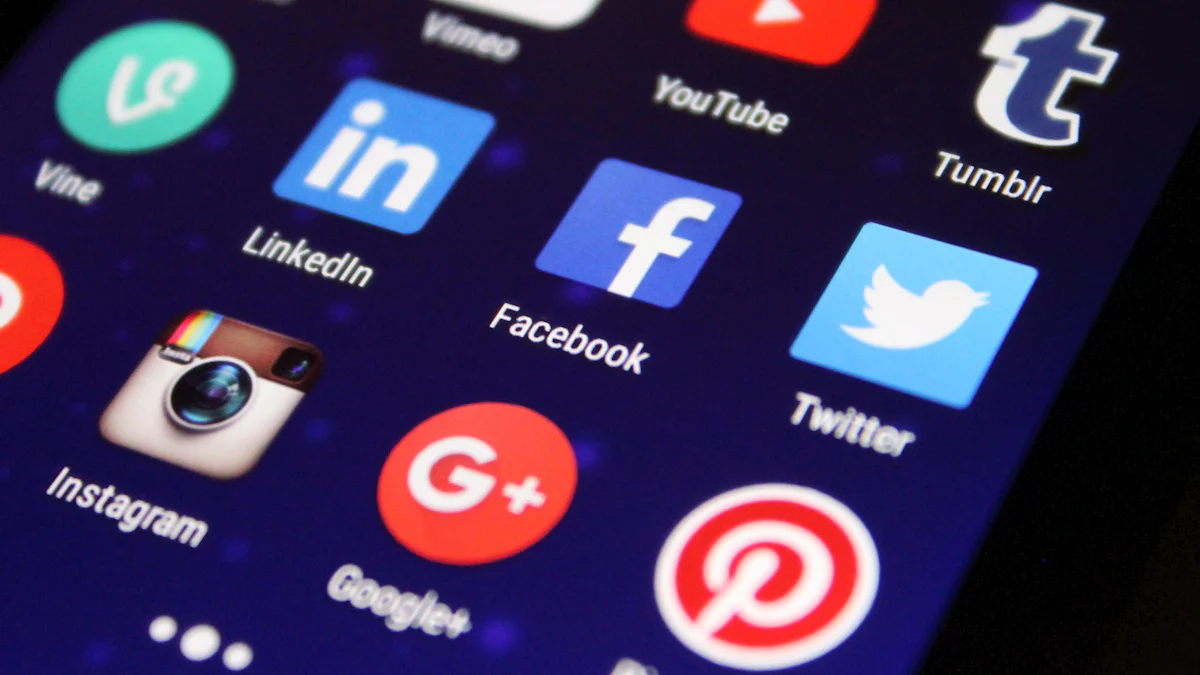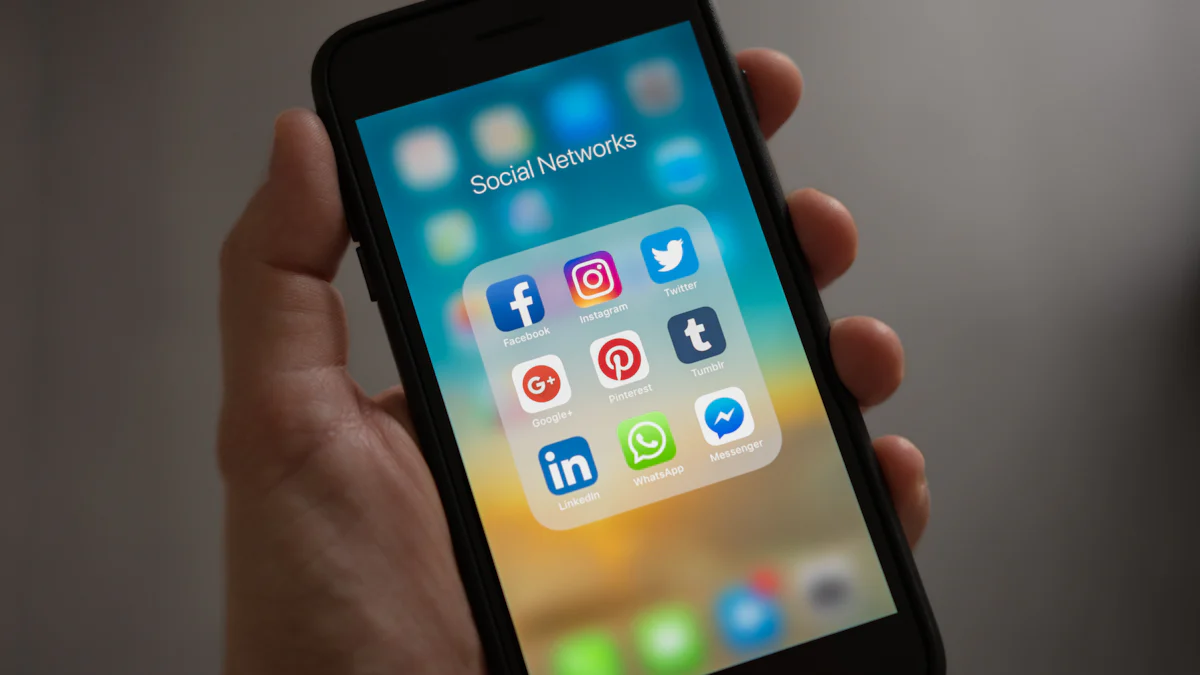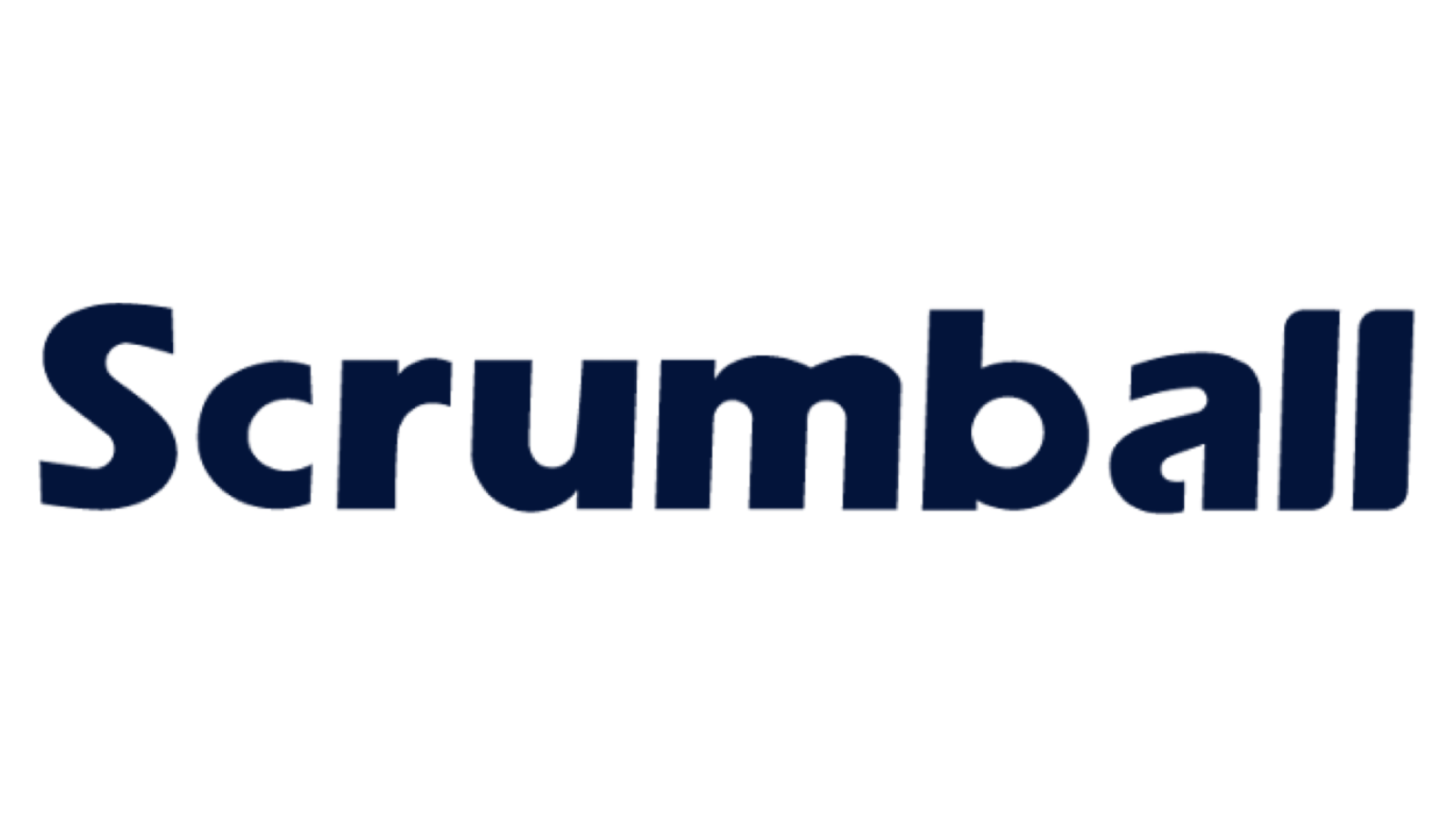Facebook Influencer Marketing vs Facebook Ads for 2025

In 2025, your choice between Facebook influencer marketing and Facebook ads could define your business success. Both strategies offer unique advantages, but selecting the right one depends on your goals. Social media trends are shifting rapidly. Short-form videos now generate 2.5 times more engagement than long-form content, and automation tools are transforming how brands connect with audiences. By leveraging these trends, you can create hyper-personalized campaigns that drive real-time engagement. Whether you aim to build trust through influencers or scale with ads, understanding these tools will help you stay ahead in a competitive market.
Advantages of Facebook Influencer Marketing

Building Trust and Authenticity
Facebook influencer marketing helps you build trust with your audience. People trust recommendations from a real person more than a brand. A trusted influencer can create a sense of authenticity that traditional ads often lack. When an influencer shares your product or service, it feels like a genuine endorsement. This connection makes your audience more likely to engage with your brand. You can use influencer-generated content to showcase your offerings in a relatable way. This approach strengthens your credibility and fosters long-term loyalty.
Niche Targeting for Specific Audiences
Influencer marketing allows you to reach highly specific audiences. Influencers often have a dedicated following within a particular niche. Whether you want to target fitness enthusiasts, tech lovers, or foodies, you can find an influencer who aligns with your goals. This precision ensures your message reaches the right people. Unlike broad social media marketing campaigns, this strategy focuses on quality over quantity. By working with influencers who share your values, you can connect with audiences who are genuinely interested in your brand.
Driving Organic Engagement
Facebook influencer marketing excels at driving organic engagement. Influencers create content that resonates with their followers, sparking likes, comments, and shares. This engagement boosts your visibility on Facebook’s algorithm, helping your brand reach even more people. Unlike traditional ads, influencer marketing feels less intrusive. It encourages natural interactions, making your audience feel more connected to your brand. You can track influencer marketing campaigns to measure this engagement and refine your strategy for better results.
Tip: Partner with influencers who align with your brand’s voice and values. This alignment ensures your campaigns feel authentic and effective.
Advantages of Facebook Ads
Precise Targeting with Advanced Tools
Facebook ads give you unmatched precision when it comes to targeting your audience. With advanced tools, you can ensure your message reaches the right people at the right time. Here’s how these tools work:
- Audience Targeting: You can create new audiences or use saved ones, customizing them to fit your campaign goals.
- Detailed Targeting: Facebook allows you to target users based on their behaviors, demographics, and interests. You can even add or exclude specific parameters to refine your audience further.
- Placement Options: You can choose Advantage+ placements for automatic optimization or manually select placements to target specific areas on Facebook.
These features make it easier to target facebook ads effectively, ensuring your campaigns deliver maximum impact.
Tip: Use detailed targeting to focus on users who are most likely to engage with your brand. This approach saves money and improves your ROI.
Scalability for Any Budget
Facebook ads are perfect for businesses of all sizes. Whether you’re a startup or an established brand, you can scale your campaigns to match your budget.
- You can adjust your ad spend based on your financial goals.
- Facebook ads allow you to target specific audiences, making scaling cost-effective.
This flexibility ensures you never overspend while still reaching your desired audience. Even with a small budget, you can achieve significant results by focusing on the right audience and ad placements.
Measurable Results and Real-Time Optimization
One of the biggest advantages of Facebook ads is the ability to measure your results. You can track every aspect of your campaign and make adjustments in real time. Here’s a breakdown of key metrics:
| Metric | Description |
|---|---|
| Impressions | Tracks how many times users see your ad. |
| Amount spent | Helps you monitor and control your campaign costs. |
| Results | Shows how often your campaign achieves its goals. |
| Cost per result | Calculates the average cost for each achieved result. |
| Click-Through Rate (CTR) | Measures how often users click on your ad. |
| Frequency | Indicates how many times each user sees your ad. |
| CPM (Cost per thousand impressions) | Reflects the cost of 1,000 ad impressions. |
| Return on Ad Spend (ROAS) | Measures the profitability of your campaigns. |
These metrics help you optimize your campaigns for better performance. You can identify what works and what doesn’t, ensuring your ads deliver the best possible ROI.
Note: Regularly monitor your metrics to refine your strategy and maximize your ad performance.
Disadvantages of Facebook Influencer Marketing
Cost Variability and ROI Challenges
Working with influencers can be unpredictable when it comes to costs. Some influencers charge premium rates, especially those with larger followings. You might find yourself spending more than expected without guaranteed results. Unlike Facebook ads, influencer marketing often lacks standardized pricing. This variability makes it harder to predict your return on investment (ROI). If the influencer’s audience doesn’t respond as expected, your campaign could fall short of its goals. To avoid this, you need to carefully vet influencers and negotiate terms that align with your budget and objectives.
Tip: Start with micro-influencers. They often charge less and have highly engaged audiences, which can improve your ROI.
Limited Control Over Content and Messaging
When you collaborate with an influencer, you give up some control over how your brand is presented. Influencers create content in their own style, which may not always align perfectly with your vision. This lack of control can lead to messaging that feels off-brand or inconsistent. You also risk the influencer misrepresenting your product or service, which could harm your reputation. While you can provide guidelines, you can’t dictate every detail. This makes it crucial to choose influencers who truly understand your brand values.
Saturation and Authenticity Concerns
The influencer marketing space has become crowded. Many influencers promote multiple brands, which can dilute their authenticity. If their followers sense that the endorsements are purely transactional, they may lose trust in the influencer—and by extension, your brand. This saturation also makes it harder for your campaign to stand out. You need to ensure that your chosen influencer has a genuine connection with their audience. Otherwise, your efforts could get lost in the noise.
Note: Look for influencers who have a history of authentic engagement with their followers. Avoid those who frequently post sponsored content without meaningful interaction.
Disadvantages of Facebook Ads
Ad Fatigue and Declining Engagement
Facebook ads often face the challenge of ad fatigue, where users grow tired of seeing the same ad repeatedly. This leads to declining engagement and reduced campaign effectiveness. You can identify ad fatigue by monitoring key metrics:
| Metric | Description |
|---|---|
| Ad Frequency | Often marks the beginning of fatigue. |
| Click-through rate (CTR) | A slow decline in CTR often indicates ad fatigue. |
| Cost-per-action | An increase in average cost-per-action may signal ad fatigue. |
When users see your ad too often, they may ignore it or even develop negative feelings toward your brand. To combat this, you need to refresh your ad creatives regularly and experiment with new formats. This keeps your audience engaged and prevents your campaigns from losing their impact.
Rising Costs and Budget Constraints
The cost of running Facebook ads has been steadily rising, making it harder for businesses to maintain profitability. Several factors contribute to this trend:
- Facebook Ads costs are influenced by data privacy regulations and competition.
- The introduction of Apple's ATT ad framework has negatively impacted Facebook's advertising revenue, slowing growth from 2% in 2021 to just 0.4% in 2022.
- The bidding system, targeting, placement, and creatives all play a role in driving up ad costs.
For small businesses, these rising costs can strain budgets and limit the ability to scale campaigns. You must carefully plan your ad spend and focus on high-performing strategies to maximize your return on investment (roi).
Privacy Regulations Impacting Targeting
Privacy regulations have significantly affected Facebook's targeting capabilities. The loss of third-party cookies has forced marketers to adapt their strategies. Here’s how these changes impact you:
- The loss of cookies limits the accuracy of web traffic audiences, requiring you to rely on customer lists and Facebook's internal data sources.
- Interest and behavioral targeting have become less precise, pushing marketers to use demographic prospecting and independent tracking methods.
- Demographics remain largely unaffected, allowing you to continue leveraging Facebook's demographic targeting options.
These changes mean you need to invest more time and resources into building first-party data and refining your targeting strategies. While Facebook still offers powerful tools, adapting to these new regulations is essential for maintaining campaign success.
Key Metrics Comparison: Cost, Return on Investment, Engagement, and Long-Term Impact

Cost Analysis of Both Strategies
When comparing costs, Facebook Ads offer a more predictable pricing structure. You can expect to pay between $0.50 and $2.00 per click (CPC) or $5 to $10 per 1,000 impressions (CPM). This makes it easier to plan your budget and scale campaigns effectively. On the other hand, influencer marketing costs vary widely. Micro-influencers typically charge $100 to $500 per post, while macro-influencers can demand $5,000 to $20,000 or more.
| Marketing Type | Cost Structure |
|---|---|
| Facebook Ads | CPC: $0.50 - $2.00 |
| CPM: $5 - $10 per 1,000 impressions |
| Influencer Marketing | Micro-influencers: $100 - $500/post | | | Macro-influencers: $5,000 - $20,000+ |
If you’re working with a limited budget, Facebook Ads may provide better control over your spending. However, influencer marketing can deliver higher perceived value when targeting niche audiences.
Comparing Return on Investment
The return on investment for both strategies depends on your goals. Facebook Ads excel in delivering measurable results through precise targeting and flexible budgeting. You can track every dollar spent and adjust campaigns in real time to maximize profitability. Influencer marketing, however, shines in building trust and authenticity. Over 60% of marketers plan to increase their influencer budgets because of its effectiveness in engaging niche audiences.
If your goal is to reach a broad audience quickly, Facebook Ads are the way to go. But if you want to foster deeper connections with a specific group, influencer marketing offers a unique advantage. The choice ultimately depends on how you define success for your campaign.
Engagement Rates and Trends
Engagement is where influencer marketing often outshines Facebook Ads. Consumers trust influencers more than brands or celebrities, with 62% saying they feel more connected to influencers. This trust translates into higher engagement and loyalty. In contrast, Facebook Ads have a median engagement rate of just 0.063%, though top-performing brands can achieve up to 0.19%.
While Facebook Ads are effective for targeting, they lack the personal touch that influencer marketing provides. If you want to boost engagement, partnering with influencers who align with your brand values can make a significant impact. However, combining both strategies can help you balance reach and authenticity.
Long-Term Impact on Brand Loyalty and Visibility
When it comes to building brand loyalty and visibility, both Facebook influencer marketing and Facebook ads offer unique advantages. However, their long-term impact depends on how you use them to connect with your audience.
Influencer marketing excels at creating lasting relationships. When influencers promote your brand, they act as trusted advocates. Their followers often view their recommendations as genuine, which fosters loyalty. Over time, this trust translates into repeat customers and word-of-mouth referrals. You also benefit from the evergreen nature of influencer content. A well-crafted post or video can continue to generate engagement long after the campaign ends. This organic reach strengthens your brand’s visibility without additional costs.
Facebook ads, on the other hand, provide consistent exposure. You can maintain a steady presence in your audience’s feed by running ongoing campaigns. This visibility keeps your brand top-of-mind, which is crucial in competitive markets. Ads also allow you to retarget users who have interacted with your brand before. This strategy reinforces your message and encourages conversions. However, the impact of ads often fades once the campaign stops. To sustain visibility, you need to invest in continuous advertising.
Tip: Combine both strategies to maximize long-term impact. Use influencer marketing to build trust and loyalty, and Facebook ads to maintain visibility and drive conversions.
| Strategy | Long-Term Benefit |
|---|---|
| Influencer Marketing | Builds trust and fosters loyalty |
| Facebook Ads | Ensures consistent brand visibility |
If you want to create a lasting impression, focus on authenticity and consistency. Influencers help you connect emotionally with your audience, while ads keep your brand in their line of sight. Together, these tools can elevate your brand’s presence and ensure long-term success.
Exploring the Hybrid Approach
Benefits of Combining Facebook Influencer Marketing with Ads
Combining Facebook influencer marketing with ads creates a powerful synergy that amplifies your campaigns. This approach blends the trust and credibility of influencers with the precision and scalability of Facebook Ads. Here’s why this combination works so well:
- It delivers a high return on investment by leveraging the strengths of both strategies.
- Influencers enhance your brand’s credibility, while Facebook Ads ensure your message reaches the right audience.
- You can expand your campaign’s reach beyond the influencer’s followers by using Facebook’s targeting tools.
- Lookalike audiences built from influencer campaigns can drive more qualified leads and boost sales.
- This hybrid strategy works across all stages of the buying funnel, attracting engaged prospects eager to connect with your brand.
By combining these tools, you can create campaigns that are both authentic and far-reaching, ensuring marketing success.
Examples of Successful Hybrid Campaigns
Many brands have already seen success by blending influencer marketing with Facebook Ads. For example, a fitness brand partnered with micro-influencers to promote their new workout gear. The influencers created authentic, influencer-generated content showcasing the products in action. The brand then used Facebook Ads to amplify this content, targeting lookalike audiences based on the influencers’ followers. This strategy increased sales by 35% and boosted engagement rates.
Another example comes from a skincare company. They collaborated with influencers to share personal testimonials about their products. The company repurposed this influencer-generated content for Facebook Ads, targeting users interested in beauty and wellness. The campaign not only increased brand awareness but also drove a 50% increase in website traffic.
These examples show how a hybrid approach can maximize the impact of your campaigns by combining authenticity with advanced targeting.
Tips for Implementing a Hybrid Strategy
To implement a hybrid strategy effectively, follow these steps:
- Define performance metrics to measure the success of your campaigns.
- Choose influencers who align with your brand values and have engaged audiences.
- Use influencer-generated content in your Facebook Ads to maintain authenticity.
- Build lookalike audiences based on the influencer’s followers to expand your reach.
- Monitor and evaluate your campaigns regularly to refine your strategy.
This approach ensures your campaigns remain impactful and cost-effective. By combining the strengths of influencer marketing and Facebook Ads, you can achieve better results and connect with your audience on a deeper level.
Choosing between Facebook influencer marketing and Facebook Ads depends on your goals and audience. Each strategy offers unique benefits:
- Facebook Ads provide unmatched reach and precise targeting, connecting with over 2.08 billion users.
- Influencer marketing builds trust and engagement through authentic connections, with 62% of consumers trusting influencers more than brands.
To succeed in 2025, align your strategy with your business objectives. Start by identifying your goals, both short-term and long-term. Reflect on past campaigns to refine your approach. Set SMART goals and explore emerging trends to stay ahead.
Tip: Combine both strategies for maximum impact. Use influencers to foster trust and Facebook Ads to scale your reach.
Experiment with different approaches and analyze results. This ensures your marketing efforts deliver the best outcomes for your business.
FAQ
What is the best way to achieve maximum ROI with Facebook marketing?
You can achieve maximum ROI by combining Facebook influencer marketing with ads. This hybrid approach leverages influencers’ trust-building power and Facebook Ads’ precise targeting. Use influencer-generated content in ads to expand reach and drive conversions effectively.
Should small businesses focus on Facebook Ads or influencer marketing?
Small businesses should start with Facebook Ads due to their scalability and budget flexibility. Once you establish a foundation, consider adding influencer marketing to build trust and engage niche audiences. A hybrid strategy works best for long-term growth.
How do I choose the right influencers for my brand?
Look for influencers who align with your brand values and have engaged followers. Check their content quality, audience demographics, and past collaborations. Prioritize authenticity over follower count to ensure meaningful connections with your target audience.
Are Facebook Ads still effective despite rising costs?
Yes, Facebook Ads remain effective when optimized correctly. Focus on detailed targeting, compelling creatives, and regular performance monitoring. Retargeting and lookalike audiences can help you maximize results while staying within budget.
Can I measure the success of influencer marketing campaigns?
Yes, you can track metrics like engagement rates, reach, and conversions. Use tools like Facebook Insights or third-party platforms to analyze performance. Clear goals and KPIs will help you evaluate the campaign’s impact on your business.
See Also
Key Influencer Marketing Trends You Should Follow in 2024
15 Essential Influencer Marketing Platforms for Your 2024 Strategy
Effective TikTok Influencer Marketing Techniques to Use in 2024
Best Influencer Marketing Platforms to Boost E-commerce Growth
Affordable Influencer Marketing Platforms to Consider in 2024
